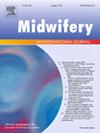Barriers to and enablers of type 2 diabetes screening among Indian and Chinese women with prior gestational diabetes: A qualitative study applying the Theoretical Domains Framework
IF 2.6
3区 医学
Q1 NURSING
引用次数: 0
Abstract
Problem
Women with previous gestational diabetes mellitus (GDM) are at increased risk of type 2 diabetes (T2D).
Background
In Australia, GDM and T2D prevalence are particularly high among Indian and Chinese women. Attendance for recommended postpartum T2D screening is low. Our aim was to identify modifiable barriers to, and enablers of, postpartum T2D screening among Chinese and Indian women with prior GDM in Australia, compare these to those of women with prior GDM from the general Australian population, and make culturally appropriate recommendations for intervention (messaging) content.
Methods
Participants were recruited via the National Gestational Diabetes Register and social media platforms. Semi-structured interviews were conducted in March-May 2021. Using an inductive-deductive approach, data were coded to Theoretical Domains Framework (TDF) domains and mapped to the Capability, Opportunity, Motivation-Behaviour (COM-B) model.
Findings
Ten women participated: 6 Chinese born, 4 Indian born, nine of whom had previously screened for T2D. Nine influential TDF domains were identified, suggesting messaging content needs to address: Motivation (fear of T2D, encourage role modelling beliefs), Opportunity (encourage social support taking cultural and family norms into account), Capability (increase awareness of T2D risk, optimise prompts/reminders)
Conclusions
Use of the COM-B and TDF suggests nine modifiable barriers to, and enablers of, postpartum T2D screening among Indian and Chinese-born women in Australia with prior GDM, mostly consistent with those of general Australian GDM populations. Culture-specific needs, such as including family in knowledge and support, and providing specific information regarding genetic- versus behaviour related risks can be accounted for within an inclusive messaging intervention addressing topics applicable to all women.
曾患妊娠糖尿病的印度和中国妇女进行 2 型糖尿病筛查的障碍和促进因素:应用理论领域框架的定性研究
有妊娠期糖尿病(GDM)的女性患2型糖尿病(T2D)的风险增加。在澳大利亚,印度和中国女性的GDM和T2D患病率特别高。参加推荐的产后T2D筛查的人数很低。我们的目的是确定在澳大利亚既往患有GDM的中国和印度妇女进行产后T2D筛查的可改变障碍和促进因素,将这些与澳大利亚一般人群中既往患有GDM的妇女进行比较,并提出文化上适当的干预(信息传递)内容建议。方法通过国家妊娠糖尿病登记和社交媒体平台招募参与者。半结构化访谈于2021年3月至5月进行。使用归纳演绎方法,数据被编码到理论领域框架(TDF)领域,并映射到能力,机会,动机-行为(COM-B)模型。研究结果:6名中国出生的女性,4名印度出生的女性,其中9人之前曾接受过T2D筛查。确定了九个有影响的TDF域,建议消息传递内容需要解决:动机(对T2D的恐惧,鼓励角色塑造信念),机会(鼓励将文化和家庭规范考虑在内的社会支持),能力(提高对T2D风险的认识,优化提示/提醒)结论COM-B和TDF的研究表明,在澳大利亚患有GDM的印度和中国出生的女性中,产后T2D筛查的9个可改变的障碍和促进因素,大部分与澳大利亚一般GDM人群一致。文化特定需求,例如将家庭纳入知识和支持,以及提供有关遗传与行为相关风险的具体信息,可以在包容性信息传递干预措施中加以考虑,处理适用于所有妇女的主题。
本文章由计算机程序翻译,如有差异,请以英文原文为准。
求助全文
约1分钟内获得全文
求助全文
来源期刊

Midwifery
医学-护理
CiteScore
4.50
自引率
7.40%
发文量
221
审稿时长
13.4 weeks
期刊介绍:
Midwifery publishes the latest peer reviewed international research to inform the safety, quality, outcomes and experiences of pregnancy, birth and maternity care for childbearing women, their babies and families. The journal’s publications support midwives and maternity care providers to explore and develop their knowledge, skills and attitudes informed by best available evidence.
Midwifery provides an international, interdisciplinary forum for the publication, dissemination and discussion of advances in evidence, controversies and current research, and promotes continuing education through publication of systematic and other scholarly reviews and updates. Midwifery articles cover the cultural, clinical, psycho-social, sociological, epidemiological, education, managerial, workforce, organizational and technological areas of practice in preconception, maternal and infant care.
The journal welcomes the highest quality scholarly research that employs rigorous methodology. Midwifery is a leading international journal in midwifery and maternal health with a current impact factor of 1.861 (© Thomson Reuters Journal Citation Reports 2016) and employs a double-blind peer review process.
 求助内容:
求助内容: 应助结果提醒方式:
应助结果提醒方式:


